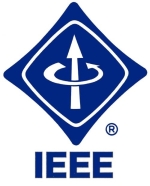Embedded System Links
- Journals
- Conferences
- Hot Topics
- Standards
- Tools and Platforms
- Main Projects
- Position Papers
- Roadmaps
- Newsletters and Magazines
- Mainstream Press
- Announcements
- Publications
Other Calls
IEEE Transactions on Computers Special Section
Programming Models and Architectures for Embedded Systems
 IEEE Transactions on Computers seeks original manuscripts for a Special Section on Programming Models and Architectures for Embedded Systems scheduled to appear some times during mid 2008.
IEEE Transactions on Computers seeks original manuscripts for a Special Section on Programming Models and Architectures for Embedded Systems scheduled to appear some times during mid 2008.Embedded Systems are ubiquitous today, and the most explosive growth in computing today is seen in the field of embedded computing. Various design issues have been plaguing the science and the engineering of embedded systems design which span both hardware and software systems design. Since a large portion of the embedded systems space is occupied by safety-critical systems, plain engineering rules of thumbs for designing such systems is often not desirable. Scientific theories based in sound semantic models that lead to verifiable designs or correct-by-construction designs are needed. One popular programming model is the synchronous programming model. In this model, rigorous
semantic theory exists which allows automated refinement of specification culminating in code-generation which is guaranteed to be correct by construction. Similarly, embedded systems often run software which are asynchronously interacting with the environment and the hardware it is running on. As a result, asynchronous interaction models for
such systems are being developed for the ease of verifiability of properties of such software. The choice of suitable programming models, rather than just programming implementation code from scratch without a model driven
approach can immensely influence the reliability of embedded systems. The choice of programming model, it turns out, also depends on the architectural model for the system implementation. For example, a time triggered architecture vs. event triggered architecture would influence the programming model, and the corresponding methodology for
designing. Often domain specific programming models and architectures are invented to bind the design space of an embedded system, so the optimization of the design through design space exploration can be done efficiently with proper tool support.
Important dates:
Submissions Due: 08 June 2007
Completion of First Round of Reviews (decisions must be received by): 08 August 2007
Major Revisions Due: 08 October 2007
Completion of Second Round of Reviews (decision must be received by): 08 November 2007
Minor Revisions Due: 22 November 2007
Final Decisions Due: 05 December 2007
Final Acceptance Notification to Authors: 10 December 2007
Publication Materials Due: 24 December 2007
See it online!
(c) Artist Consortium, All Rights Reserved - 2006, 2007, 2008, 2009

